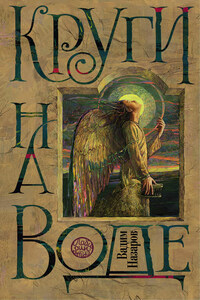It has served us well, this myth of Christ.
—Pope Benedict VI
No other problem of our time is rooted so deeply in the past.
—Report of the Royal Palestine
Commission of Inquiry, 1937
It is difficult to distinguish fact from legend … I have found no consensus on what is fact; it depends on the viewpoint. Interestingly enough, legend— which is by definition distorted—gives a far more acceptable view of events. Everyone agrees on legend, but nobody agrees on facts.
—Michael Coney, The Celestial Steam Locomotive
AUTHOR'S NOTE
No other organization in history has captured the attention and curiosity of modern readers as completely and intriguingly as the medieval order of monks known as the Knights Templar. The beginnings of that popular fascination sprang from the 1982 publication of Holy Blood, Holy Grail by Michael Baigent, Richard Leigh, and Henry Lincoln. I know that my own interest in the Order of the Temple was kindled by reading that book, because although I had always been fascinated by the mystery and mysticism surrounding the Templars, it was only after reading Holy Blood, Holy Grail that I thought, There has to be a truly greatstory hidden in there somewhere, if a guy could just strip away allthe layers of obfuscation and find a way to really look at who thesepeople were and what made them tick. I had always believed that the Knights Templar were real, very human people, despite the fact that, back when I was a boy, the only pictures we had of them were stylized stone figures carved on medieval tombs, and the only reports we ever read of them told us they were a villainous and evil breed, condemned and excommunicated by the Church as heretics and apostates.
The grasping Norman knights in Ivanhoe were all Templars, as were the lowering, black-visaged villains in several other tales I read in boyhood, and one seldom heard, or read, anything good about the Knights Templar. They were always evil, threatening stereotypes. And yet a quiet, logic-bound area of my awareness recognized other, seldom listed and infrequently mentioned aspects of Templar history: they existed as an order for less than two hundred years, and for most of that time they were the legitimate standing army of the Catholic Church; they invented and perfected the first sophisticated, credit-and-gold-bullion–based international banking system, and they financed all the kings and kingdoms of Christendom. They also amassed the largest and most impressive portfolio of real estate holdings known to history, and to protect their enormous trading fleet they developed the largest navy in the world. Their black and white naval ensign, a white skull and crossbones on a black field, struck the fear of God into pirates everywhere.
Most impressive of all, however, to a storyteller, was the awareness that their meteoric career effectively came to an end in a single day, on Friday the thirteenth of October 1307, a date, to paraphrase Franklin Roosevelt, that will live forever, if not in infamy, then at least in mystery. And so were born in my mind the elements of my tale of the Templars: The Beginnings, designed and brought about, history tells us, by nine penniless men—two of whose names we do not even know today—who spent years digging in the bowels of Jerusalem and unearthed a treasure that made them the most powerful and influential force on earth for two centuries; The Middle, when a corps of monks, all of them wearing the equal-armed cross of the Order of the Temple, formed a standing army in the Holy Land and fought to the death, hopelessly outnumbered by the swarming legions of Saladin’s Saracens, in a vain attempt to preserve an impossible dream; and The End, when the order was overthrown in a single day by the sinister lieutenant of a grasping, ambitious king, and only a few escaped to foster and nurture a legend and a tradition of hope and regeneration.
In writing these novels for modern readers, I have had to deal with the French names of my major characters. All the original Templar knights were French and nobly born, which meant that their names all had a “de” in the middle, as in Geoffroi de Bouillon, André de Montbard, Hugues (Hugh) de Payens, etc. Family names, or surnames, as we know them today, were not in common use that long ago, and most of the identifiable names that existed came from the family’s birthplace or region. If a man called Guillaume (William) was born in a certain town or city, such as Chartres in France, he would be known as William of Chartres … Guillaume de Chartres. That makes for tough reading in modern English, and so I have made allowances, dropping the “correct” French names in many, although not all, instances, in favor of simplifying things for modern readers. I have given all my characters “modern” sounding names, simply by anglicizing their first names wherever possible and dropping the “de” between their first and second names. Thus Geoffroi de St. Omer becomes simply Godfrey St. Omer, Archambaud de St. Agnan becomes Archibald St. Agnan, and Payen de Montdidier becomes Payn Montdidier, but Hugues de Payens, the founder of the Knights Templar, becomes Hugh, yet remains Hugh de Payens, because that is his historical identity.










